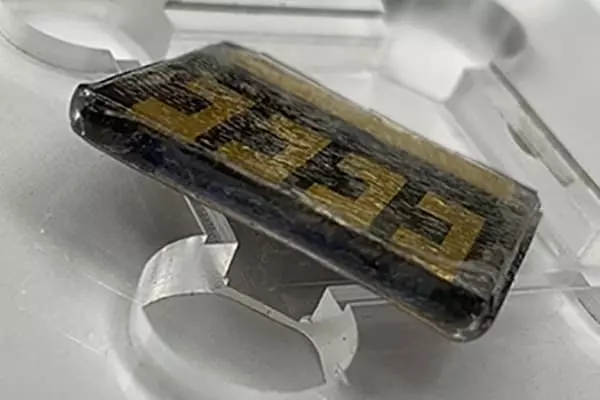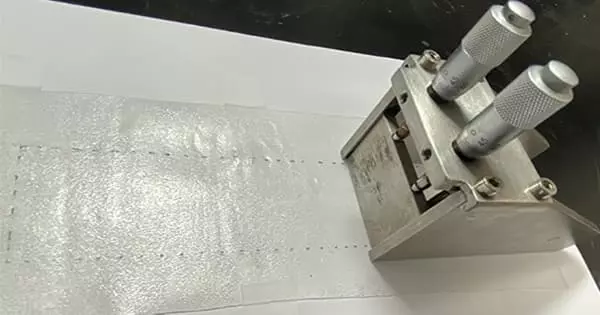The researchers describe the creation of a low-cost Scotch-tape-like film that can be applied to perovskite solar cells and capture 99.9% of leaked lead in the event of solar cell damage. Researchers at Northern Illinois University and the United States Department of Energy’s (DOE) National Renewable Energy Laboratory (NREL) in Golden, Colorado, have reported a potential breakthrough that could help accelerate the commercialization of highly promising perovskite solar cells (PSCs) for use in solar panels.
Perovskites are one of the most promising technologies for future high-efficiency solar cell concepts and are currently being researched by the majority of the leading cell and module manufacturers. Environmental concerns about the use of water-soluble lead in perovskite materials, on the other hand, are one of several impediments to wider commercial adoption of the technology.
The researchers describe the development of a low-cost Scotch-tape-like film that can be applied to PSCs and capture 99.9% of leaked lead in the event of solar cell damage in the journal Nature Sustainability. According to the research team, the industry-ready film would help alleviate health and safety concerns without compromising perovskite solar-cell performance or operation. The lead-absorbing film was tested by immersing damaged cells in water.
Our practical approach reduces potential lead leakage to a level safer than the drinking water standard. We can easily apply our lead-absorbing materials to off-the-shelf films currently used to encapsulate silicon-based solar cells at the end of their production.
Professor Tao Xu
“Our practical approach reduces potential lead-leakage to a level safer than the drinking water standard,” said NIU Chemistry Professor Tao Xu, who co-led the research with NREL’s National Renewable Energy Laboratory’s Kai Zhu.
“We can easily apply our lead-absorbing materials to off-the-shelf films currently used to encapsulate silicon-based solar cells at the end of their production,” Xu added. “The films would be laminated to the solar cell at the end of PSC production.”
The tape solution is fully described in the paper On-device lead-absorbing tapes for sustainable perovskite solar cells, which was published in the journal Nature Sustainability. The lead-absorbing material is coated onto a film of ethylene-vinyl acetate (which is commonly used to encapsulate various types of solar cells), evaporated under ambient conditions, and laminated between the glass and electrode layers.

PSCs, a new type of solar cell, are considered rising stars in the field of solar energy due to their high power conversion efficiency (greater than 25.5 percent) and low manufacturing costs. However, PSCs are not yet widely available commercially due to significant challenges, including potential lead-toxicity issues.
Small amounts of water-soluble lead remain critical components of the light-absorbing layer of high-efficiency PSCs, which must be able to withstand harsh weather in order to be commercially viable. Significant lead leakage from damaged cells would be hazardous to one’s health and safety.
To address these concerns, the transparent tapes employ lead absorbents composed of a standard solar ethylene vinyl acetate (EVA) film and a pre-laminated layer of lead-absorbing material. As in the standard encapsulation process used in silicon-based solar cells, the tape can be attached to both sides of fabricated PSCs.
The scientists exposed the film-encapsulated PSCs to outdoor, rooftop conditions for three months as one of the tests used to assess the durability of the new technology. The solar cells were then damaged with razor blades and hammers before being submerged in water for seven days. The lead-absorbing tapes had a lead-sequestration efficiency of more than 99.9%.
“Perovskite solar cells offer great hope for a more sustainable future,” said Xu. “This work provides a practical and industry-ready method for reducing potential lead leakage from lead-containing PSCs, allowing for future commercialization of perovskite-based photovoltaic technology.”
Perovskite solar cells are a new technology that has the potential to accelerate the energy transition to a more sustainable future. The presence of toxic but unavoidable lead, on the other hand, poses environmental and health risks. We present on-device layers that can capture over 99.9% of leaked leads without compromising performance or operation.
















